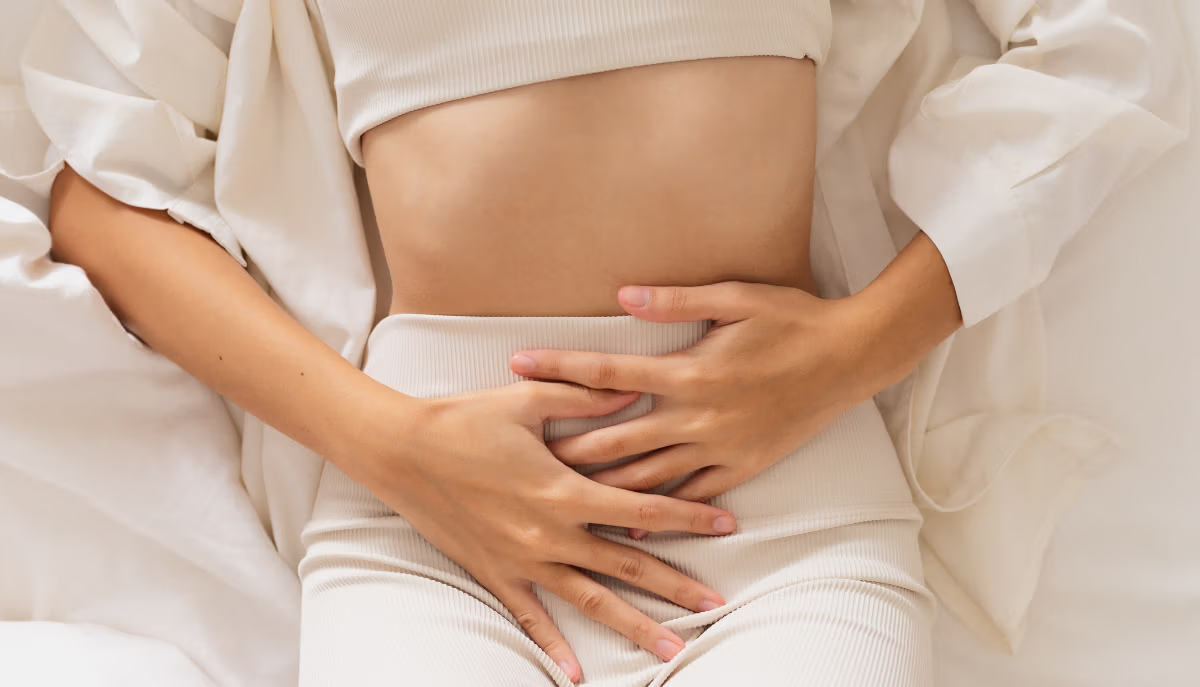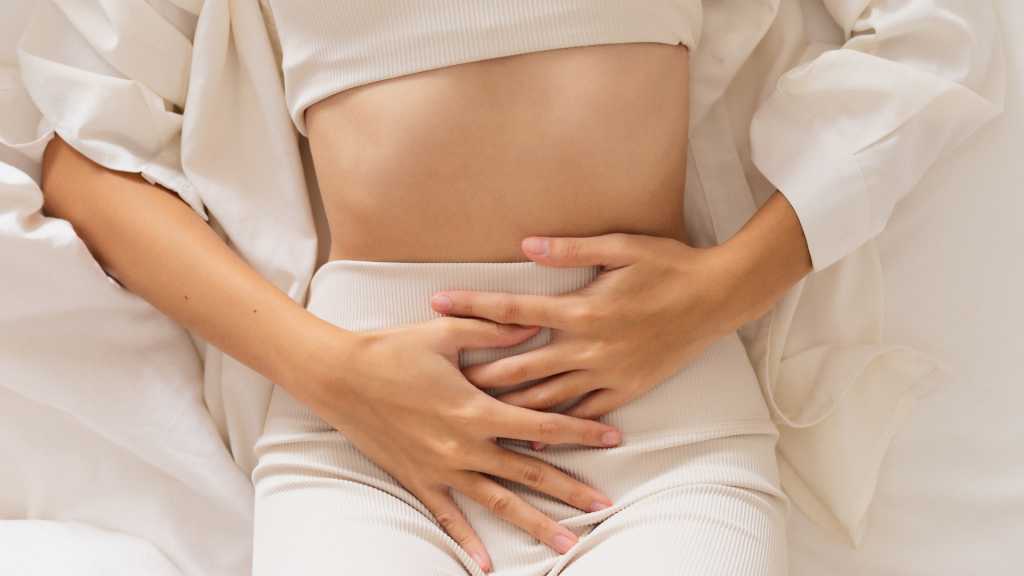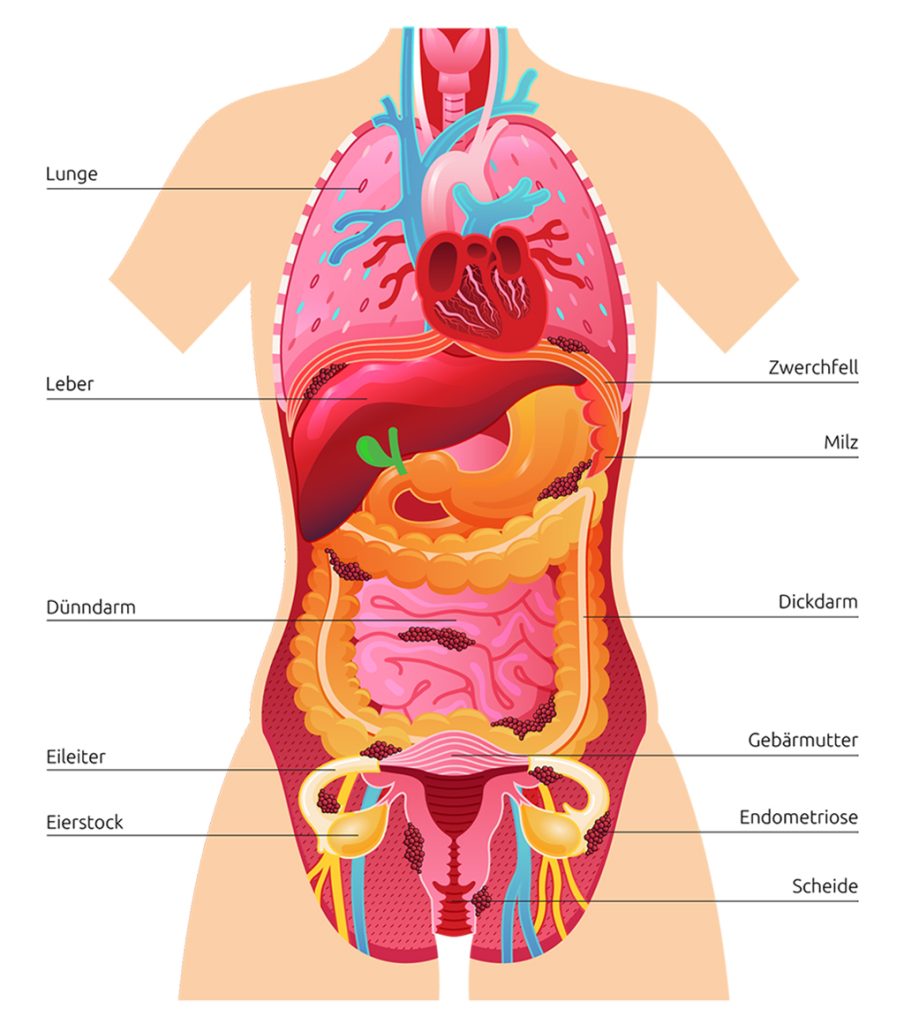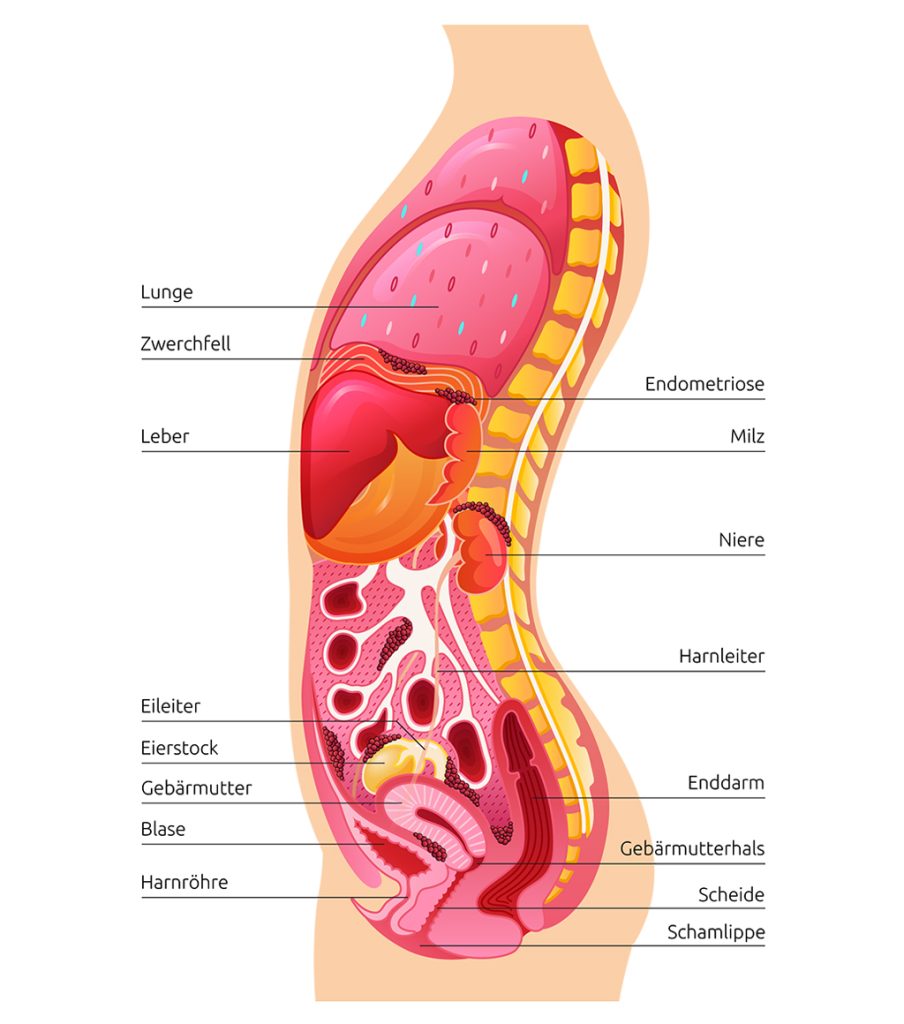Endometriosis Symptoms: recognize typical signs early
Endometriosis can be cyclical – but doesn’t have to be. Many affected individuals experience severe cramps in the lower abdomen, back, or pelvis around their period. Others experience additional or primarily symptoms outside of bleeding. Possible symptoms include persistent pain that affects daily life, as well as pain spikes during bowel movements, urination, movement, or sex. Bleeding can be heavy, prolonged, or irregular. Digestive and bladder problems occur cyclically or independently. Shoulder pain or chest pressure are also possible if lesions are located on the diaphragm. Important: Pain intensity and lesion size do not necessarily correlate. Note when, how severe, and in what situation symptoms occur – not just on cycle days. A symptom diary over two to three cycles helps to recognize patterns and prepare for a targeted investigation. If symptoms limit you, please seek medical help.
Common signs in daily life
- Severe period pain that hinders you in school, training, or work.
- Pain during or after sex, pulling or stabbing, sometimes with lingering effects.
- Lower abdominal, back, or pelvic pain even outside of the period, persistent.
- Bowel complaints cyclically or independently, e.g., diarrhea, constipation, blood.
- Burning, pressure, or pain during urination, cyclical or not, sometimes with blood.
- Persistent fatigue, sleep problems, and reduced resilience in daily life.
Further information on endometriosis symptoms.
Endometriosis Diagnosis: how to approach it effectively
Start with a gynecologist experienced in endometriosis. The basis is your symptoms, cycle data, and an examination. A vaginal or abdominal ultrasound can not only visualize cysts but also indicate endometriosis lesions and adhesions. Important: Not every cyst is an endometrioma (chocolate cyst); many cysts are harmless. An MRI can provide additional clues for unclear findings. Laparoscopy is no longer considered purely a diagnostic tool today, but primarily a therapeutic option – if an intervention is expected to alleviate symptoms. Prepare yourself: List symptoms, previous therapies, and questions, and ask for a clear summary of the findings in understandable language.
Useful for your appointment: Use the doctor's appointment checklist and learn more about the endometriosis diagnosis process. This way you'll get more out of your consultation and plan the next steps effectively.
Endometriosis Types: where lesions can occur
Endometriosis is diverse. Flat lesions are often found on the peritoneum, appearing like small spots. Cysts can form on the ovaries, often containing old blood; they are called endometriomas, colloquially chocolate cysts. Important: Not every cyst is an endometrioma; many cysts are harmless. Deeply infiltrating lesions can penetrate tissue and, depending on their location, involve the bowel or bladder. Lesions are also possible outside the pelvis, for example on the diaphragm or in the lungs (thoracic endometriosis). If an organ is affected, it does not automatically mean deeply infiltrating; the depth is described in the findings. Symptoms depend more on the location and proximity to nerves than on the size of the lesions. Because manifestations vary so much, a careful, clearly explained investigation with appropriate imaging, such as ultrasound or MRI, is needed. The goal is to classify your symptoms and plan options that suit you and your daily life.
Overview of typical variants
- Superficial lesions on the peritoneum, often appearing as small spots.
- Ovarian cysts, endometriomas or chocolate cysts containing old blood.
- Deeply infiltrating lesions that partially penetrate surrounding structures.
- Bowel involvement with cyclical or persistent digestive complaints.
- Bladder or ureter involvement with pain or blood in the urine.
- Diaphragm or lung involvement (thoracic endometriosis) with shoulder pain.
Endometriosis Stages & Classifications briefly explained
Specialists use various schemes to describe the extent. Often, a classification into stages I – IV is used, documenting the distribution of lesions and adhesions. For deeply infiltrating lesions, there are additional systems that more precisely capture affected organs. These classifications are helpful for surgical planning, studies, and comparing progression. For you in daily life, it’s important: A stage says little about how much pain you feel or how limited you are. Crucial factors are the location of the lesions, nerve involvement, and your goals. Have the findings explained to you in plain language, including a sketch or report to take with you. This way you can later understand what was found and ask targeted questions. If something remains unclear, a second opinion is advisable – especially if an intervention is planned.
Important: A stage describes the extent, not your pain. Take your symptoms seriously – they warrant investigation, regardless of the classification.
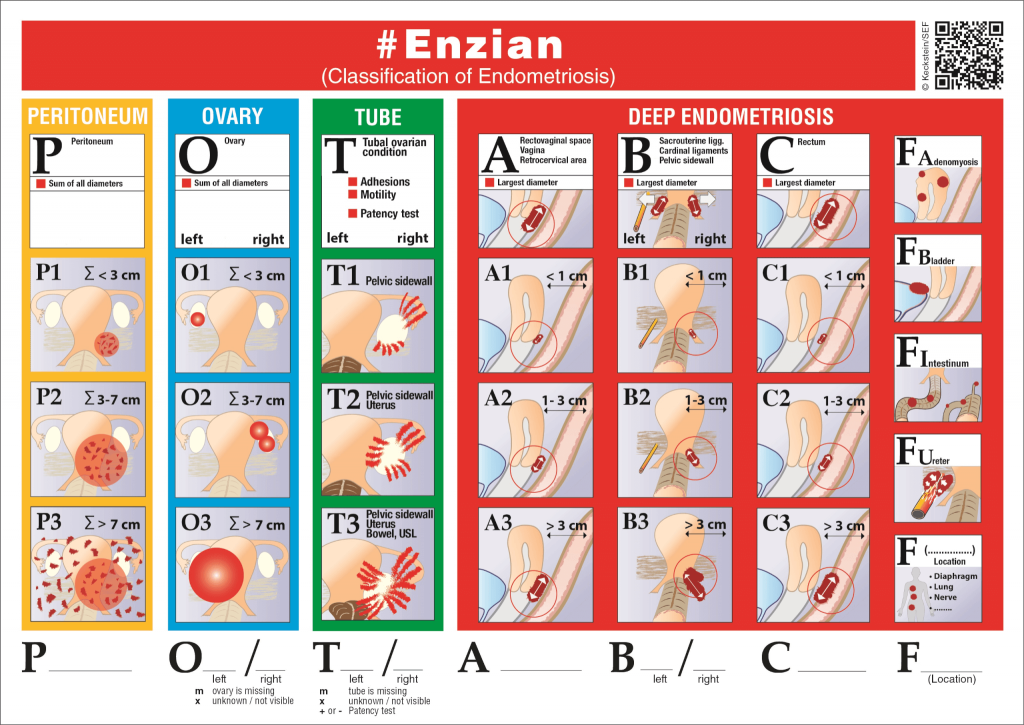
Help us raise awareness for endometriosis.
We work 100% voluntarily in Switzerland – your membership or donation enables education and greater visibility.
Endometriosis Treatment: Goals, Options, Collaboration
Treatment is tailored to your symptoms, goals, and daily life. Initially, it helps to work with a gynecological specialist to identify what currently affects you most. This leads to a phased plan. Common components include pain management and hormonal treatments that calm lesions and cycle activity. If an intervention is expected to be beneficial, laparoscopy can remove lesions or release adhesions – performed in experienced centers and after thorough consultation. Additionally, nutritional therapy, physiotherapy/pelvic floor therapy, and complementary medicine (e.g., TENS, acupuncture) may be considered. No single method suits everyone, and there is no guarantee. What’s important is a team that takes you seriously, explains things clearly, and defines realistic goals with you: fewer pain spikes, better resilience, manageable bleeding, or family planning support. Care in an endometriosis center with a multimodal, interdisciplinary approach is advisable – where different specialties work together in a coordinated manner. Regularly check if the therapy is working, document your observations, and adjust the steps together. This way you remain empowered, step by step.
Learn more about endometriosis treatments.
Adenomyosis: related to endometriosis, briefly explained
In adenomyosis, uterine lining-like tissue grows into the muscle wall of the uterus. Typical symptoms include very heavy, cramp-like bleeding, pressure and fullness, and an enlarged, tender organ. Adenomyosis can occur alone or together with endometriosis. Investigation is usually done via ultrasound, supplemented by MRI if necessary. Treatment is guided by your symptoms and goals: pain and bleeding control, as well as daily-life compatible hormonal treatments, are prioritized. Surgical options are limited and are only considered in specific situations in Switzerland. Have the pros and cons explained to you and decide together what suits you.
Endometriosis Resources in Switzerland: how to find help
You don’t have to bear this alone. Endo-Help offers guidance, understandable information, and pointers to self-help groups. For medical investigation, contact a gynecologist experienced in endometriosis or an endometriosis center directly if possible. A referral is usually not necessary for this – you can book appointments yourself. General practitioners are often not the best first point of contact because specific experience with endometriosis is lacking. In our overview, you will find facilities with proven expertise, filterable by classification and canton. Additionally, physiotherapy, nutritional therapy, and psychological support can help to better cope with pain, exhaustion, and daily demands. If it feels like a lot: Start small. Note down your three most important questions, book an appointment, and bring a trusted person with you. Step by step, a plan emerges that suits you and remains sustainable in daily life.

